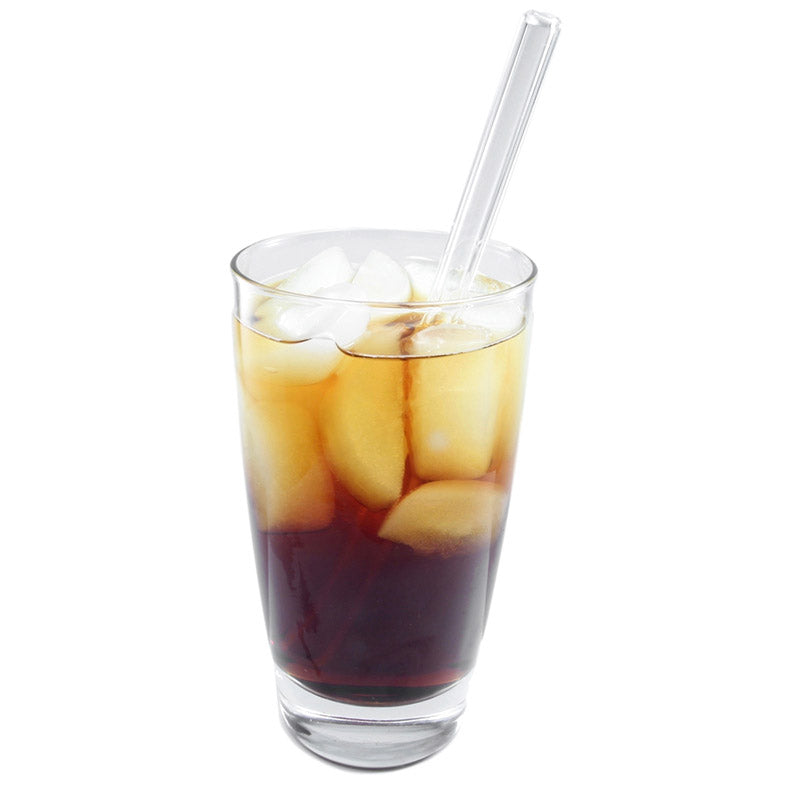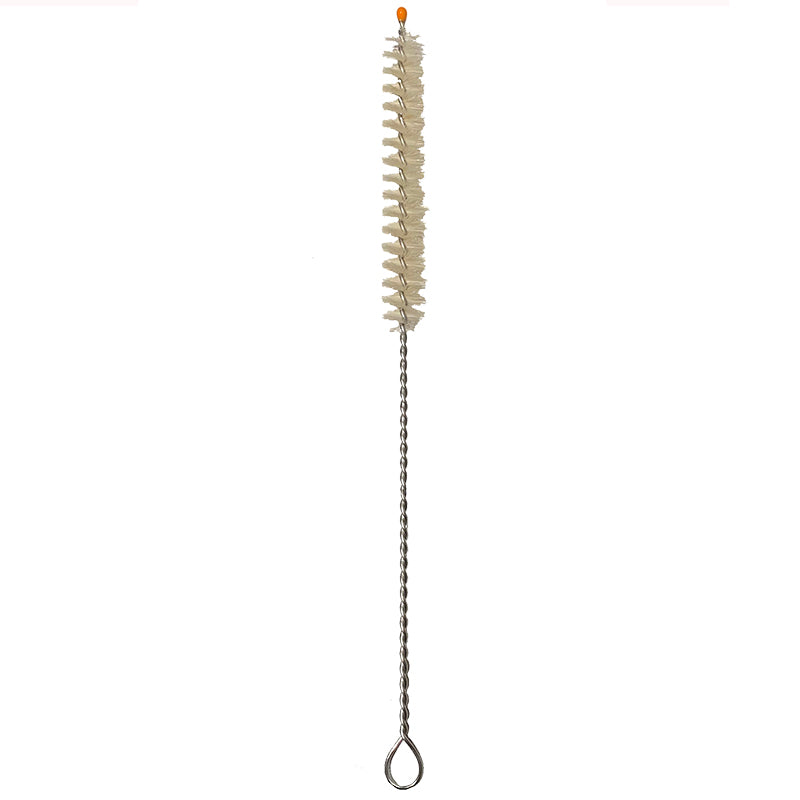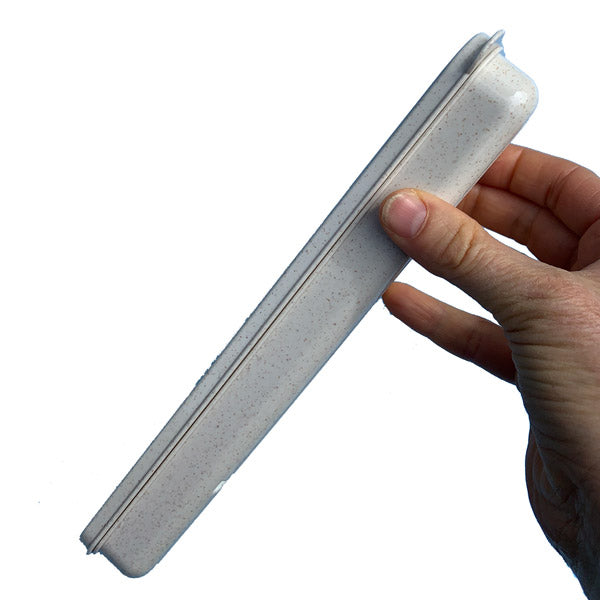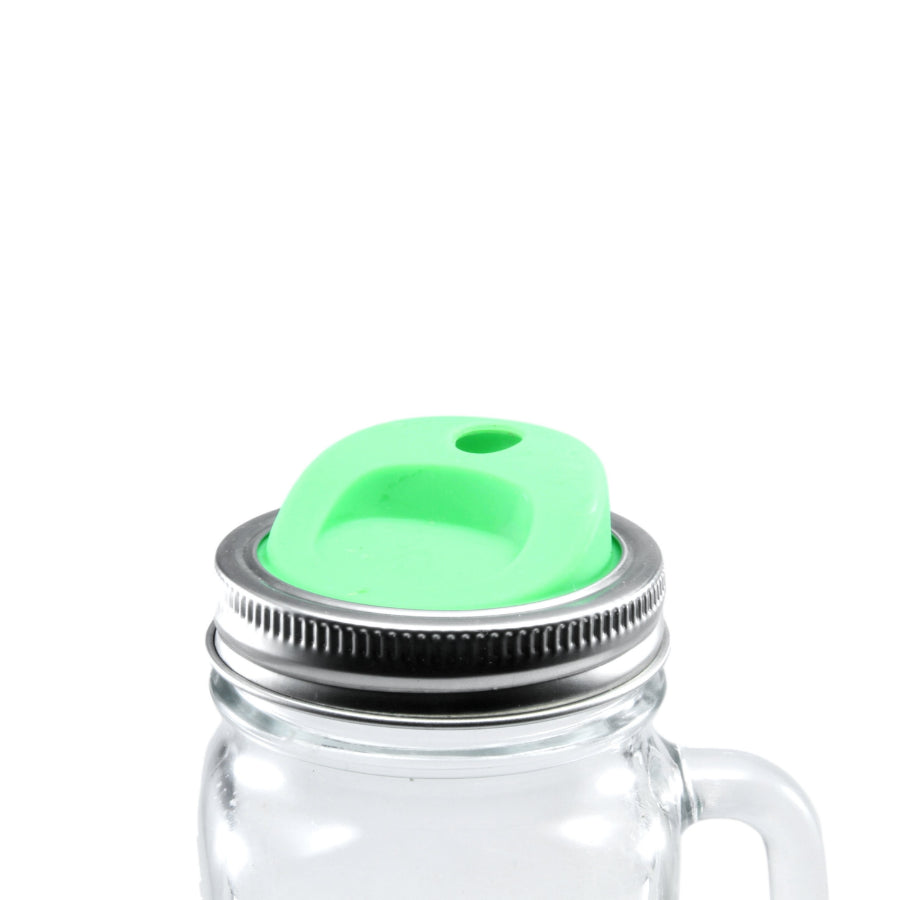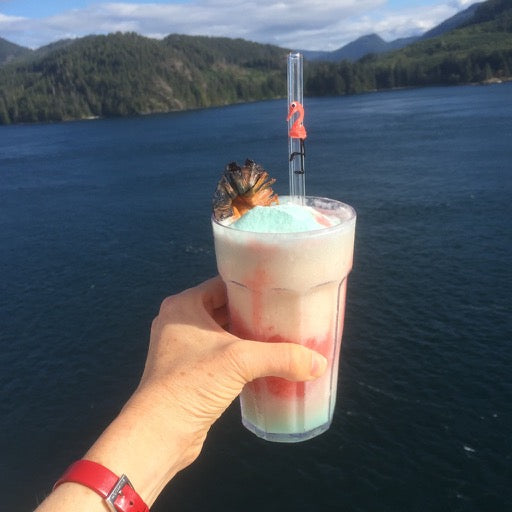Most of us want to do the right thing when it comes to protecting our environment. Thankfully, there are more and more eco-friendly options. Sometimes, however, the proliferation of options can be overwhelming. What is the best choice? What are the pluses and minuses of each option? In particular, what are the pluses and minuses of each eco-friendly drinking straw, and what is your best choice? What’s it going to be? Stainless steel? Bamboo? Silicone? “Compostable” straws? Paper? Reusable plastic? Or …. Glass?
Read on and we think you’ll agree that glass wins hands down.
Reusable Metal Straws
Stainless steel straws are virtually indestructible. But in every other category these metal straws are inferior to glass drinking straws. Stainless steel straws have sharp and hard metallic ends which are uncomfortable in your mouth and may crack or chip your teeth. Bacteria and mildew can grow inside a metal straw.
Although metal straws are dishwasher safe you will never know if the straw is truly clean because you can’t see through or inside the straw. Who knows what contaminants may be left behind?
Stainless steel straws also have a metallic taste that is particularly strong when drinking water.
And stainless steel is extremely efficient in transferring heat - which is not a good thing when it comes to reusable drinking straws. Never, ever, use a metal straw with very hot or cold beverages. You’ll burn your tongue and lips with hot beverages and crack your teeth with icy beverages!
Reusable Bamboo Straws
One benefit of bamboo drinking straws is that they biodegrade after their useful life. The problem, however, is that they have such a short useful life. Bamboo will fray, splinter and degrade. This process will accelerate if you try to wash your bamboo straw in the dishwasher. As the bamboo straw degrades, bacteria and mildew will appear on the inside of the straw.
And like stainless steel straws, bamboo is opaque. You can never see whether the straw is clean inside. It is impossible to sterilize a bamboo straw. Expect all your beverages to taste like bamboo. Oh, and bamboo straws typically come in only one size.
Reusable Silicone Straws
Reusable Silicone Straws are a good choice for small children who are still too young to safely use reusable glass straws. Silicone is unbreakable, no matter how hard a toddler may throw them onto the floor or against a wall. Silicone is also generally dishwasher safe.
Some reusable glass straw makers such as GlassSipper also sell straws to their customers with very young children. Just make sure to rinse your silicone straws thoroughly under the tap immediately after use to prevent the build up of crud inside the straw which can quickly lead to the formation of mildew and bacteria.
Reusable Plastic Straws
“Reusable” plastic straws have little if anything to recommend them, beyond being “reusable” for a limited period of time. Like single-use-plastic straws, reusable plastic straws may leach petroleum-based polypropylene and toxic Bisphenol A (BPA) into your beverage, your body, and the environment.
Many plastic straws are not dishwasher safe. Like reusable metal straws and reusable bamboo straws, reusable plastic straws are opaque so you will never know whether the inside of the straw is clean. More likely, the inside will be a breeding ground for bacteria and mildew.
And don’t try to drink a hot beverage with a reusable plastic straw, which is likely to melt in your mouth. Chocolate that melts in your mouth is one thing. Plastic melting in your mouth is quite another.
“Compostable” Straws - Not Reusable
“Compostable” straws are becoming more common at chain-cafes, and fast-food establishments. Beware the designation - “Compostable”. “Compostable” doesnot mean “biodegradable”.
Compostable straws do not biodegrade on their own. Tossed in a garbage or a recyclable bin, a compostable straw will remain intact much in the same way as a single-use-plastic straw, and cause much the same damage to the environment.
Compostable straws will only degrade in an industrial composter. However, virtually almost no compostable straws end up in an industrial composter. Rather, they end up in a landfill or in the ocean. Most compostable products such as straws are manufactured from polylactic acid plastic (PLA), which is made from genetically modified (GMO) corn. Moreover, it is also highly questionable whether industrial composters themselves are beneficial since industrial composters produce harmful microparticles that contaminate the environment.
Paper Straws - Not Reusable
If you are old enough to have used paper straws back in the 1960s and before, you’ll remember how they quickly collapsed and disintegrated in your mouth. Well, guess what? They’re back, and they still collapse and fall apart in your mouth. And when they do, you’ll also be reminded how paper straws always leave a wet-paper aftertaste in your mouth.
Unfortunately, paper straws are part of the problem, not the solution. Paper straws are a single-use product which creates waste. And watch out - some paper straws may contain harmful chemicals included to prevent the straws from getting too soggy and bleeding colored dye into your beverage.
Reusable Glass Straws
First of all, you should only buy glass straws made from borosilicate glass, which is the strongest and most durable glass commercially available. And you should only purchase from producers such as GlassSipper which provide a lifetime warranty on their straws - you break it, they replace it, no questions asked. Second, you should only use straws made from the highest quality clear borosilicate glass manufactured in the Czech Republic.
Don’t trust glass produced in factories with questionable health, safety, and labor standards.
And there are so many more reasons to choose glass. Reusable glass straws feel comfortable in your mouth. There are no hard or sharp edges. Glass straws are toxin-free, dishwasher-safe, and are resanitized with each dishwasher cycle.
Unlike every other reusable straw option, the transparency of glass lets you see if your straw is truly clean - inside and out. And unlike other reusable straw options, glass straws leave no aftertaste.
Everything tastes better with glass. Reusable glass straws are also perfect for both very hot and cold beverages since glass insulates and always stays close to room temperature, no matter the temperature of the beverage.
Only glass drinking straws also come in a wide variety of lengths and diameters so that you can custom-select your straw to perfection for your preferred beverage and drinking vessel. You’re a bubble tea lover? Glass straws come in the perfect size for you. Need a sleek reusable straw for your reusable venti cup? Dito - glass straws come in the perfect size for you!
And finally, glass straws are the only reusable straw that can also be fashioned into a unique hand-made work of art. GlassSipper Canada, for example, creates an array of hand-made glass art on its reusable glass straws. Love sea turtles? Whales? Bees? Butterflies? Or dogs? GlassSipper has a hand-made artistic straw just for you.
The Verdict
The more one learns about drinking straw choices, the more obvious the conclusion. Glass comes out ahead by a country mile. Glass feels good in your mouth. Whether piping hot or icy cold, everything tastes better with glass. Glass comes In every length and width you could ever desire. Perfect for everything from Blackberry Soda to Bubble Tea. Glass straws come out of the dishwasher sanitized, and sparkly clean - inside and out. Your eyes don’t lie. And no nasty toxins bleeding into your drink. And what could be more fun than a straw which doubles as a work of art that will always put a smile on your face. So go with glass. You’ll never look back!


